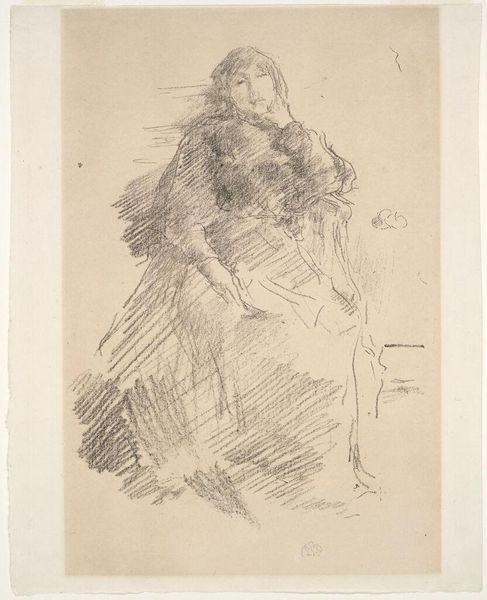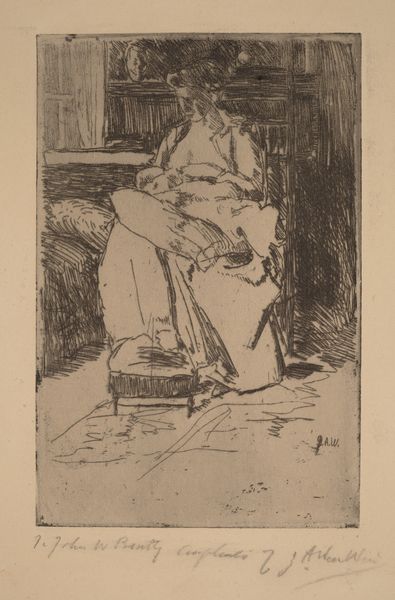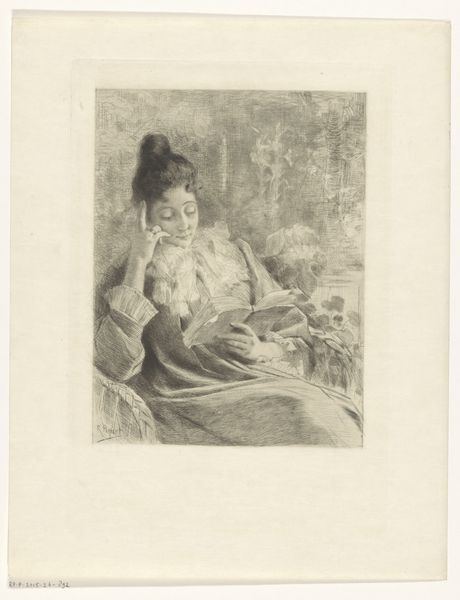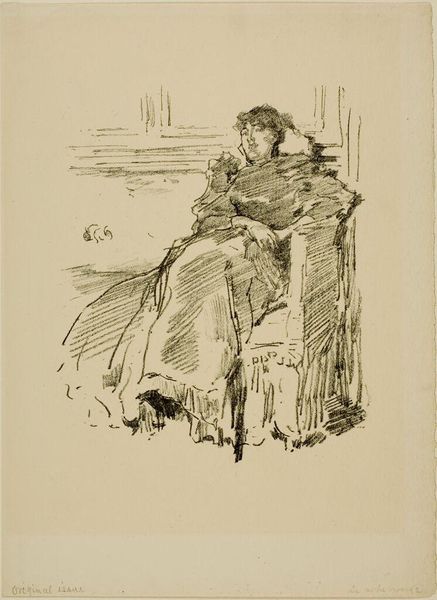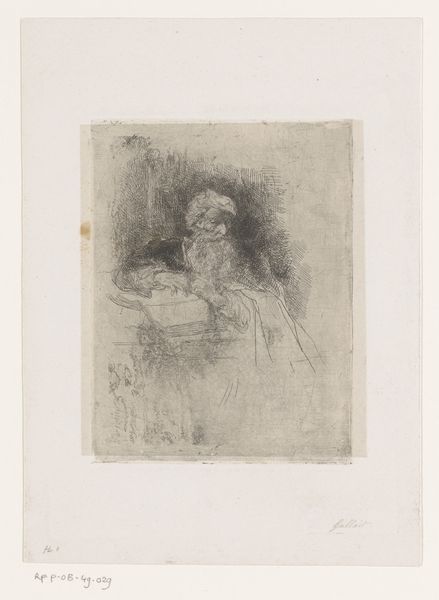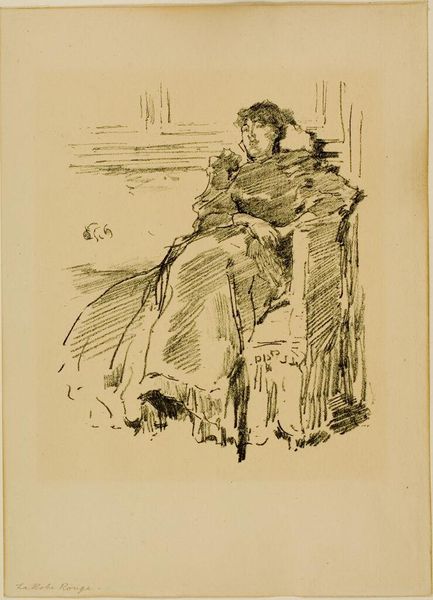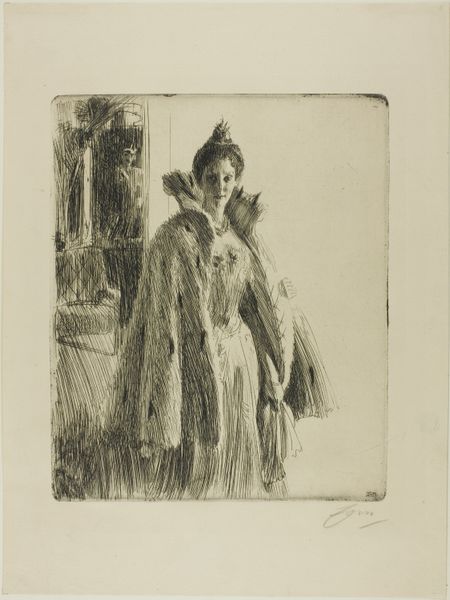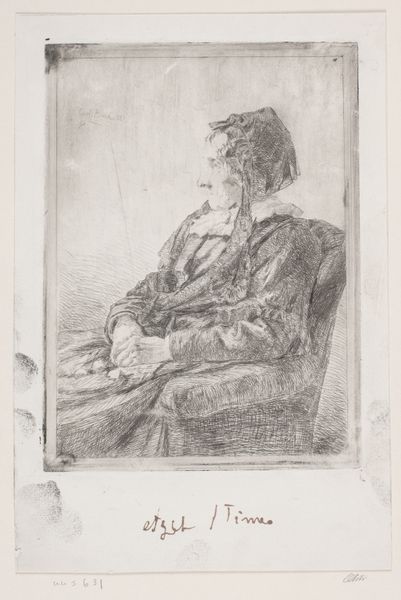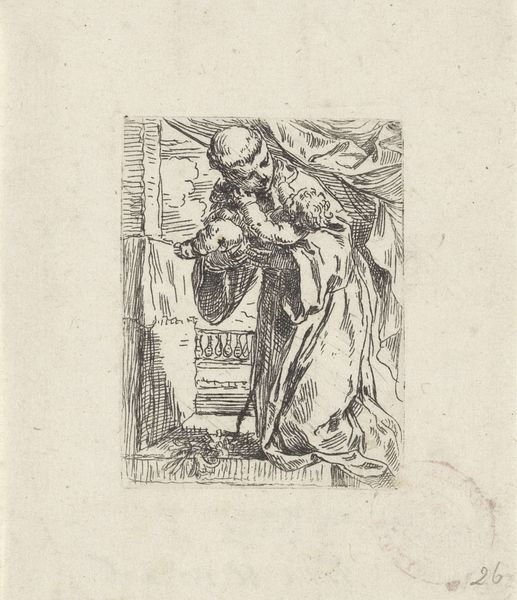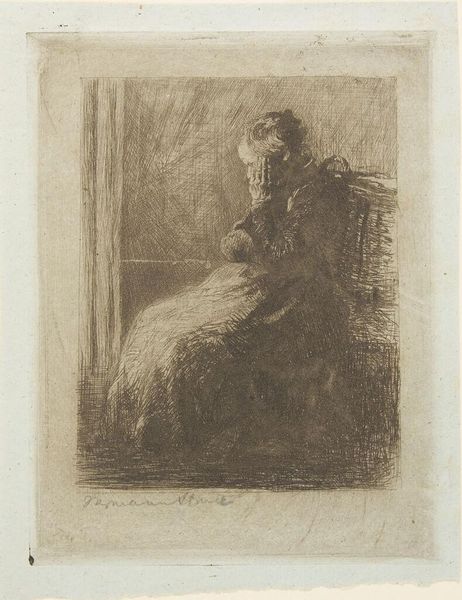
Dimensions: plate: 24.9 x 18 cm (9 13/16 x 7 1/16 in.)
Copyright: CC0 1.0
Curator: Anders Zorn created this etching, "Queen Sophia of Sweden." It’s currently part of the Harvard Art Museums collection. Editor: My first thought is how intimate it feels. The queen seems almost caught off guard, in a private moment of reflection, not a formal portrait. Curator: Zorn was known for his society portraits, but he often imbued them with a sense of immediacy and informality. It certainly challenges conventional royal portraiture. Editor: Exactly. And consider Sophia's reformist social views and her struggles with court life, this portrayal humanizes her in a way traditional portraits rarely did. The rough lines of the etching give it a raw, almost vulnerable quality. Curator: This technique—the loose, expressive lines—Zorn mastered early on. His etchings were celebrated for their suggestion of color, despite being monochrome. Editor: Right. Zorn uses the etching process to explore Sophia’s complex identity, nodding towards the socio-political environment that shaped her. What does it mean to depict a queen in repose, almost as though she is troubled by the weight of her responsibilities? Curator: It’s a fascinating question that speaks to Zorn's ability to capture not just likeness, but also a sense of character, within the constraints of his medium. Editor: I think it invites us to consider the burdens of power and the private lives of those who wield it. Curator: Indeed. It’s a powerful intersection of history, technique, and personal narrative. Editor: A potent reminder that even those in positions of power are multifaceted individuals shaped by their times.
Comments
No comments
Be the first to comment and join the conversation on the ultimate creative platform.

